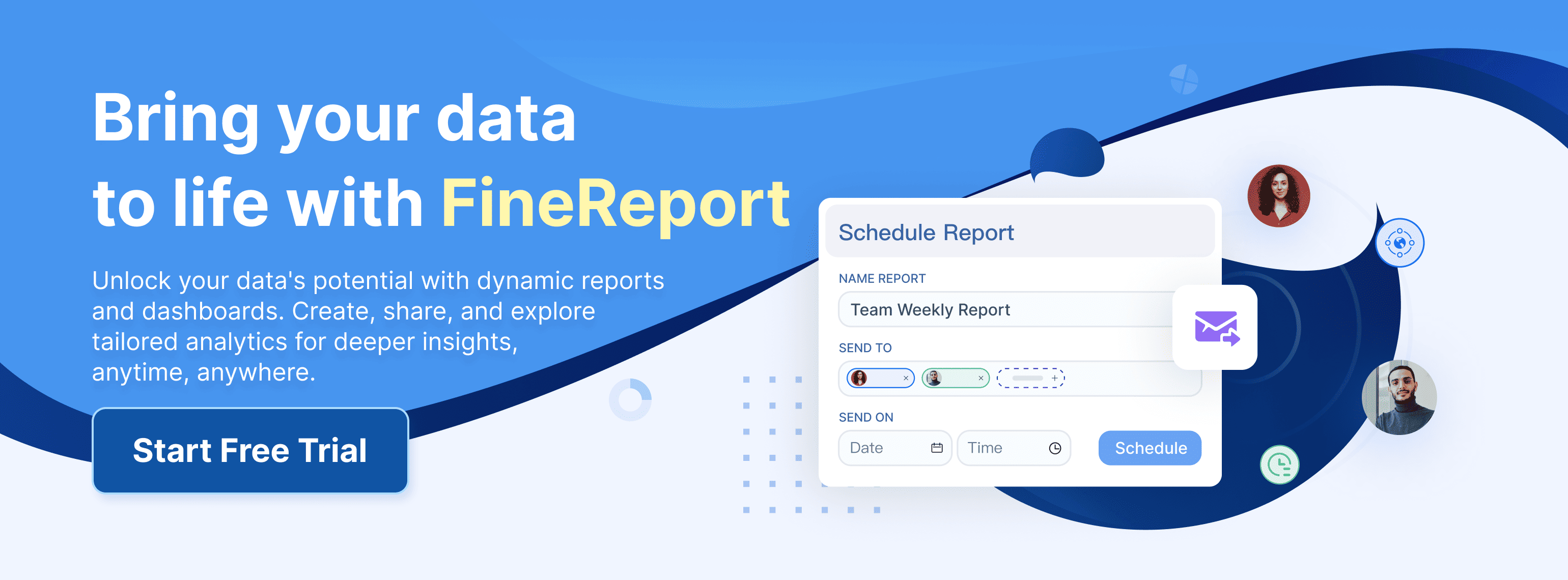Ad hoc reporting empowers businesses to create custom reports tailored to specific needs. This flexibility allows organizations to perform detailed data gathering and financial analysis, providing a competitive edge. Tools like FineReport and FineBI enhance this process by offering streamlined data exploration and easy access to information. Understanding ad hoc reporting is crucial in modern business as it enables teams to make informed decisions quickly, improving overall performance and efficiency.

What is Ad Hoc Reporting?
Definition and Explanation of Ad Hoc Reporting
Ad hoc reporting refers to the process of creating reports on-the-fly, tailored to specific needs without relying on pre-built templates. This type of reporting empowers users to generate customized reports quickly, addressing unique business questions. Unlike traditional reporting, which often requires extensive IT involvement, ad hoc reporting allows users to access data and create reports independently. Tools like FineReport and FineBI facilitate this process by providing intuitive interfaces that enable users to connect to data sources, run queries, and generate reports effortlessly.
Characteristics of Ad Hoc Reporting
Ad hoc reporting possesses several distinct characteristics:
- Flexibility: Users can create reports as needed, without predefined templates.
- Customization: Reports can be tailored to meet the unique needs of different users or departments.
- Real-Time Insights: Enables users to access and analyze data in real-time, facilitating timely decision-making.
- Empowerment: Empowers non-technical users to generate their own reports, reducing dependency on IT departments.
These characteristics make ad hoc reporting an essential tool for modern businesses, enabling them to respond quickly to changing conditions and make informed decisions.
How it Differs from Traditional Reporting
Traditional reporting typically involves pre-defined templates and requires significant IT involvement. In contrast, ad hoc reporting allows users to create reports independently, without needing to write complex SQL queries. This independence promotes a more data-driven culture within organizations, as users can explore data, identify trends, and make decisions based on real-time insights. The ability to generate reports on demand enhances collaboration and transparency within teams, as employees can share insights and findings more readily.
Historical Context of Ad Hoc Reporting
Evolution of Reporting Tools
The evolution of reporting tools has played a significant role in the development of ad hoc reporting. Initially, businesses relied on static reports generated by IT departments, which often led to delays and inefficiencies. Over time, advancements in technology have enabled the creation of more dynamic and user-friendly reporting tools. FineReport and FineBI are examples of such tools, offering streamlined data exploration and easy access to information. These tools have revolutionized the way businesses approach reporting, allowing for more agile and responsive decision-making.
Rise of Self-Service BI
The rise of self-service business intelligence (BI) has further propelled the adoption of ad hoc reporting. Self-service BI tools empower business users to access and analyze data without relying on IT assistance. This shift has democratized data analysis, enabling users to create actionable insights and make data-driven decisions. The intuitive nature of self-service BI tools, such as FineBI, inspires data discovery and information sharing, helping organizations stay agile and competitive in today's fast-paced business environment.
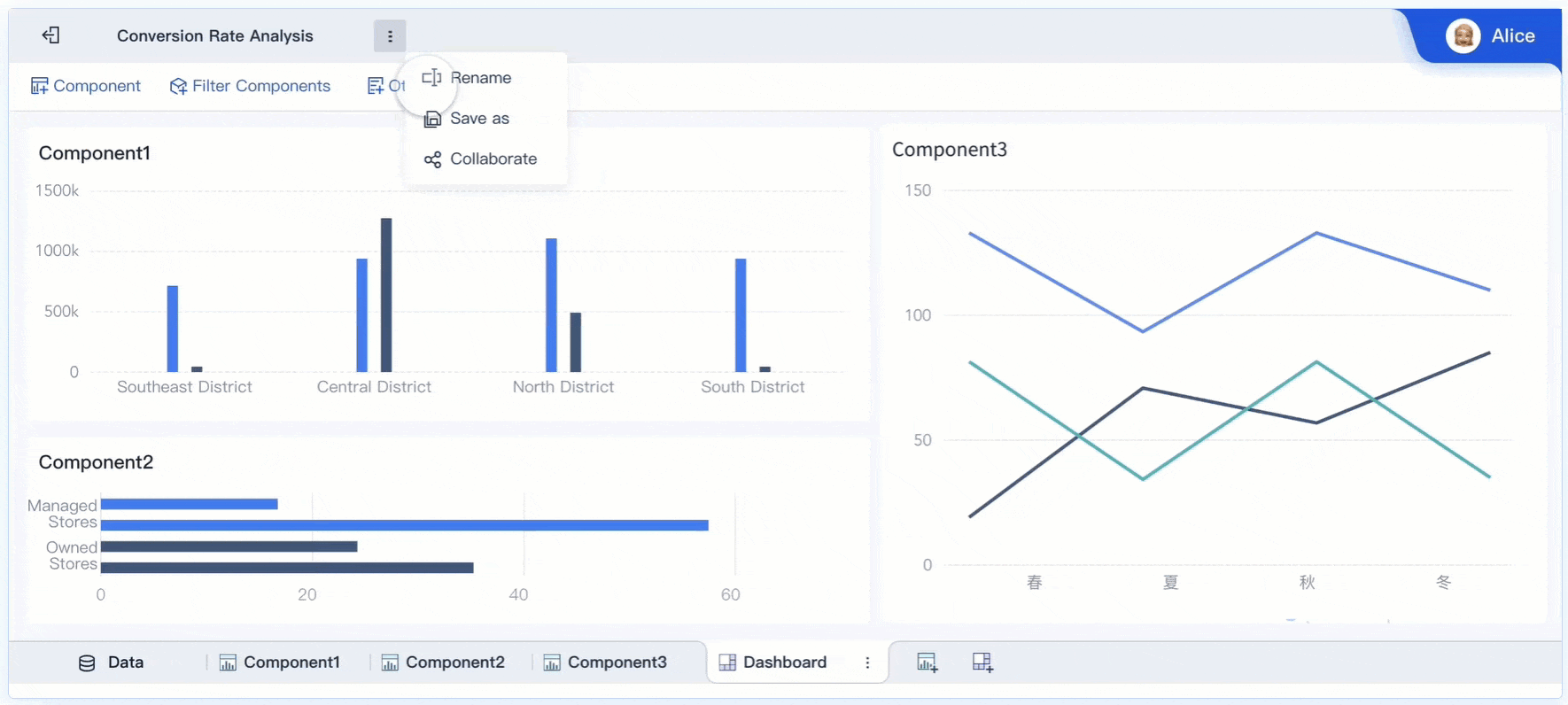
Importance of Ad Hoc Reporting
Addressing Specific Business Needs of Ad Hoc Reporting
Ad hoc reporting plays a crucial role in meeting specific business needs by offering unparalleled customization and flexibility. Unlike traditional reporting, which relies on pre-designed templates, ad hoc reporting allows users to create reports tailored to their unique requirements. This flexibility enables businesses to respond quickly to changing environments and specific inquiries.
Customization and Flexibility
Ad hoc reporting empowers users to design reports that address particular questions or challenges. This capability ensures that businesses can adapt to new situations without waiting for IT departments to generate reports.
Real-time Data Access
Access to real-time data is another significant advantage of ad hoc reporting. Users can analyze current data, leading to timely decision-making. This immediacy contrasts with traditional reporting methods, which may not offer the same level of speed and responsiveness. By enabling real-time insights, ad hoc reporting helps organizations stay agile and competitive.
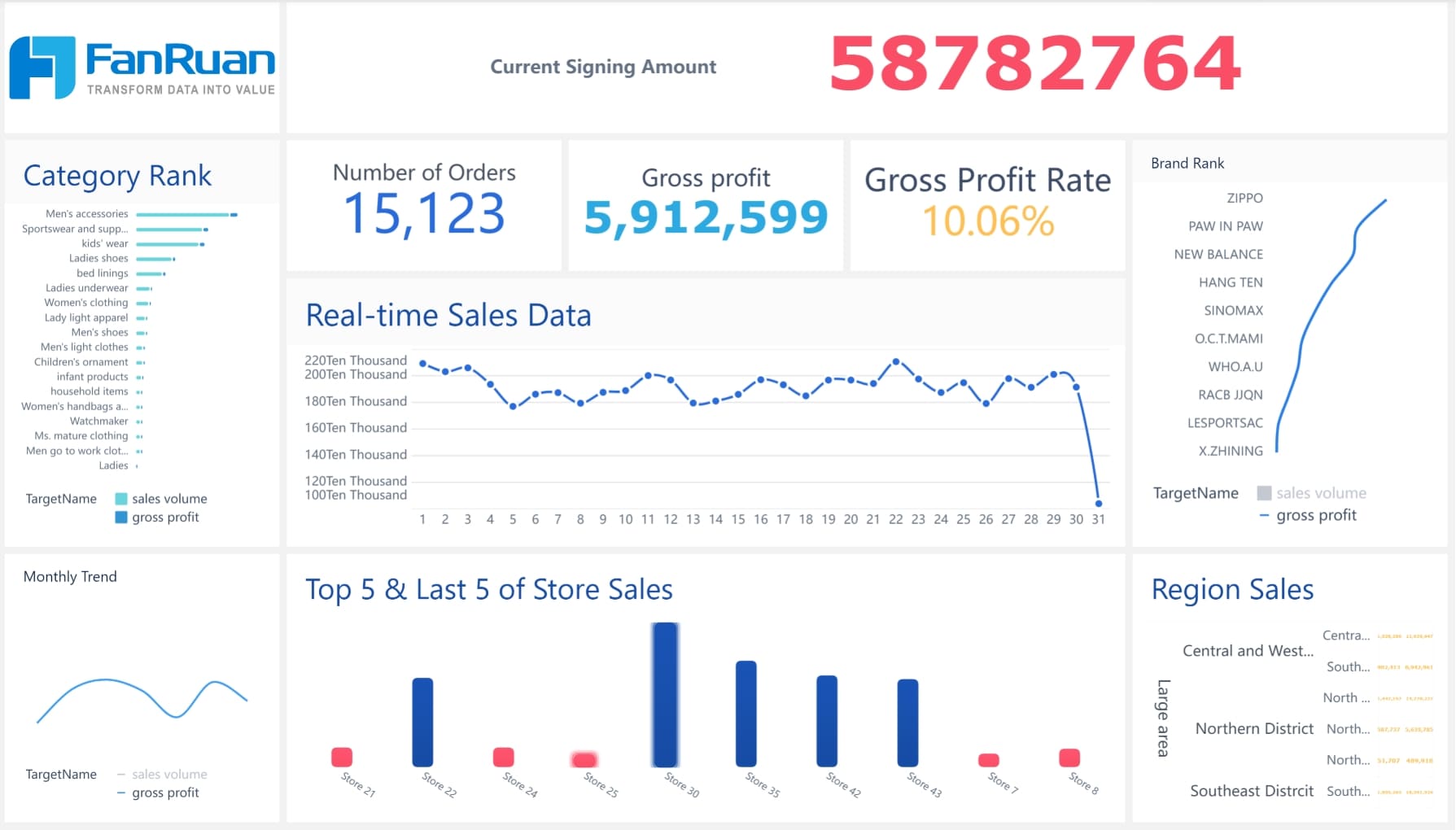
Enhancing Decision-Making of Ad Hoc Reporting
Ad hoc reporting significantly enhances decision-making by providing data-driven insights and enabling faster response times. This approach allows businesses to explore data in various ways, uncover hidden trends, and make informed decisions quickly.
Data-Driven Insights
Ad hoc reporting offers immediate answers to specific questions, providing clear visualizations and insights. This capability allows users to drill down into data and gain a nuanced understanding of business dynamics. FineBI, for example, facilitates this process by transforming raw data into actionable insights, helping organizations make informed decisions based on real-time information.
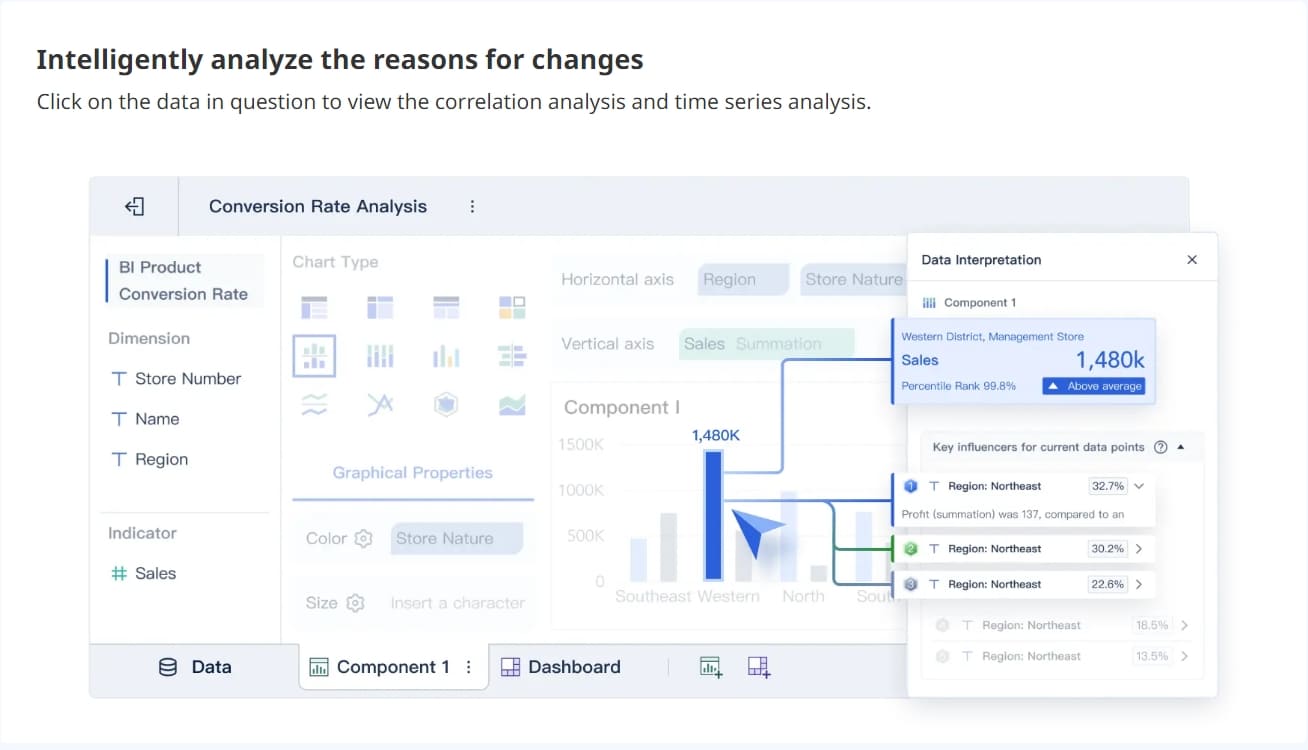
Faster Response Times
The ability to generate reports on demand leads to faster decision-making processes. Ad hoc reporting eliminates the need to wait for pre-built reports, allowing users to address unique queries and sudden issues promptly. This agility is essential in today's fast-paced business landscape, where timely responses can provide a competitive edge.
Key Benefits of Ad Hoc Reporting
Boosted Efficiency Through Self-Service Reporting
Ad hoc reporting significantly enhances efficiency by empowering business users to independently generate and customize their reports. Without relying on the IT department, users can access and analyze data quickly, which accelerates decision-making and optimizes daily operations. This freedom translates to faster insights, streamlining workflows across departments.
Reduced IT Dependency, Empowering Business Teams
In traditional reporting systems, businesses often experience bottlenecks waiting for IT professionals to create specialized reports. Ad hoc reporting tools eliminate these delays by giving users direct access to relevant data. This reduction in IT dependency frees up technical resources for other critical tasks, while business teams can spend more time on strategic analysis and data-driven decisions.
Customized, On-Demand Reports for Operational Agility
Ad hoc reporting allows users to generate reports tailored to specific needs and circumstances without predefined templates. This flexibility enables businesses to respond quickly to changes, improving both operational agility and responsiveness. Whether for a one-time analysis or ongoing monitoring, the ability to design reports on the fly improves overall reporting accuracy and efficiency.
This self-service reporting not only saves time but also enhances collaboration, as teams across the organization can independently access and analyze the data that matters most to them.
Cost-Effectiveness of Ad Hoc Reporting
Ad hoc reporting proves to be highly cost-effective by cutting operational expenses and enhancing the strategic use of resources. It not only reduces the financial burden associated with traditional reporting but also maximizes the value of organizational assets by providing timely, actionable insights.
Lower Operational Costs Through Reduced IT Involvement
One of the key cost-saving aspects of ad hoc reporting is the reduced reliance on IT departments. Traditionally, generating custom reports requires significant IT involvement, which can increase operational costs due to resource allocation and time spent. With ad hoc reporting, business users can create their own reports, freeing IT personnel to focus on more complex, high-priority tasks. This autonomy minimizes the need for technical support, resulting in lower labor and infrastructure costs.
Maximizing Resource Utilization for Better Outcomes
Ad hoc reporting enhances resource efficiency by enabling real-time data access and insights. With the ability to monitor key performance indicators and identify trends instantly, businesses can make informed decisions about resource allocation. This leads to more precise and strategic use of personnel, equipment, and financial assets. By optimizing resource deployment and reacting promptly to changing conditions, organizations can improve operational performance, reduce waste, and achieve their desired outcomes more efficiently.
The flexibility and immediate access to data that ad hoc reporting offers ensure that companies remain agile, adjusting quickly to new challenges and opportunities while keeping operational costs in check.
Challenges in Implementing Ad Hoc Reporting
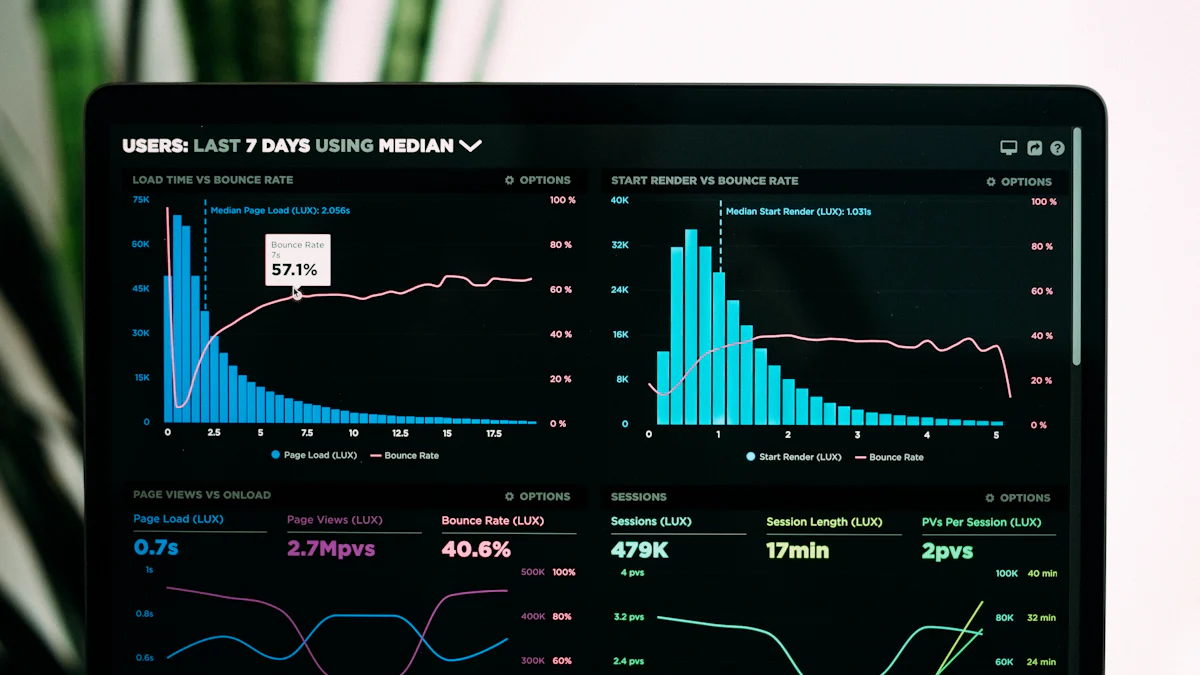
While ad hoc reporting offers significant advantages, businesses often encounter challenges during its implementation. These obstacles can hinder the overall effectiveness and smooth functioning of the reporting process, potentially limiting the expected gains in efficiency and data accessibility.
Data Quality and Consistency in Ad Hoc Reporting
Ensuring data quality and consistency is essential for generating reliable ad hoc reports. Poor-quality or inconsistent data can lead to incorrect insights, ultimately resulting in flawed business decisions.
Ensuring Accurate Data
Accurate data is the cornerstone of effective ad hoc reporting. Inaccuracies can arise from various sources, including human error during data entry, outdated information, or discrepancies between different systems. These errors can distort the insights provided by reports, compromising decision-making processes. To safeguard data integrity, businesses must implement rigorous data validation protocols, ensuring that information is accurate and up-to-date. Regular audits and real-time data updates also play a critical role in maintaining the reliability of reports.
Overcoming Data Silos
Data silos, where information is stored in isolated departments or systems, present a significant barrier to creating unified, comprehensive reports. This fragmentation limits visibility and makes it challenging to generate insights that span the entire organization. To overcome this, businesses need to promote data integration and sharing across teams and systems. Implementing tools like FineReport and FineBI, which offer seamless data connectivity, helps break down these silos by enabling easy access and integration of data from multiple sources. This ensures that ad hoc reports are based on a holistic view of the organization's data, leading to more informed and strategic decision-making.
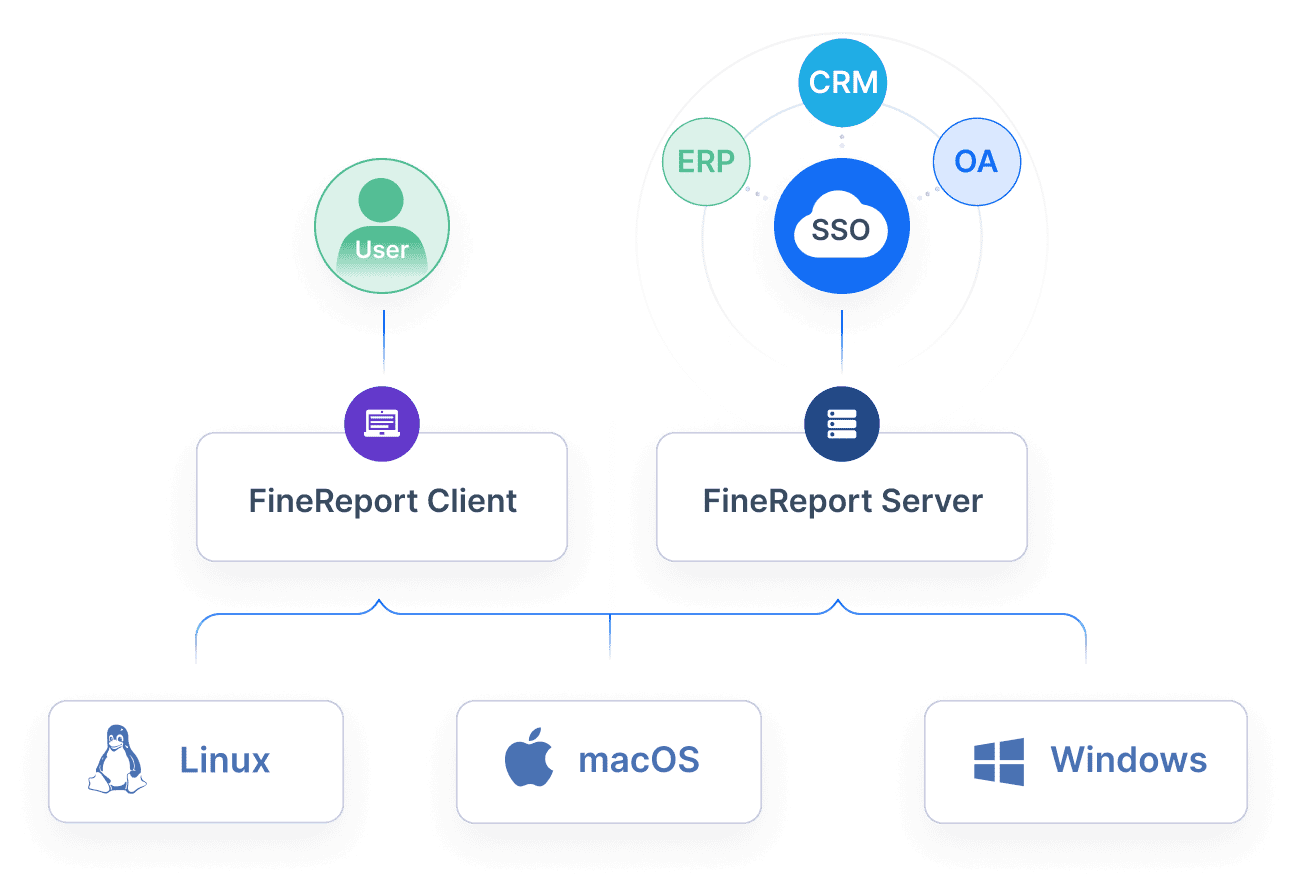
By addressing data quality and overcoming silos, businesses can enhance the accuracy and effectiveness of their ad hoc reporting efforts, ultimately supporting better business outcomes.
User Training and Adoption
For ad hoc reporting to be successful, users must be adequately trained and encouraged to adopt the tools and processes.
Educating End Users
Lack of training is a common barrier to effective ad hoc reporting. Users may struggle to utilize reporting tools if they are not familiar with their functionalities. Organizations should invest in comprehensive training programs to educate end users on how to create and interpret ad hoc reports. This education empowers users to leverage the full potential of reporting tools, leading to more informed decision-making.
Encouraging Adoption
Encouraging adoption of ad hoc reporting tools is essential for maximizing their benefits. Users may resist change due to comfort with traditional reporting methods or fear of new technology. To overcome this, businesses should highlight the advantages of ad hoc reporting, such as time savings and improved insights. Demonstrating how tools like FineReport and FineBI can simplify the reporting process and enhance data analysis can motivate users to embrace these solutions.

Solutions to Overcome Challenges in Ad Hoc Reporting
Ad hoc reporting offers significant advantages, but businesses must address certain challenges to fully leverage its potential. Implementing best practices and leveraging technology can help overcome these obstacles.
Implementing Best Practices of Ad Hoc Reporting
Establishing Data Governance
Data governance plays a crucial role in ensuring the accuracy and consistency of ad hoc reports. Organizations should establish clear data management policies to maintain data integrity. This involves setting standards for data entry, validation, and updating processes. By implementing robust data governance, businesses can ensure that the data used in ad hoc reports is reliable and up-to-date, leading to more accurate insights and informed decision-making.
Continuous User Training
Training is essential for maximizing the benefits of ad hoc reporting. Users need to understand how to utilize reporting tools effectively. By educating users on how to create and interpret reports, organizations empower them to make data-driven decisions independently. Continuous training also encourages the adoption of ad hoc reporting practices, as users gain confidence in their ability to generate valuable insights.
Leveraging Technology of Ad Hoc Reporting
Advanced BI Tools
Advanced business intelligence (BI) tools are vital for enhancing the capabilities of ad hoc reporting. Tools like FineReport and FineBI offer intuitive interfaces that simplify data exploration and report generation. These tools enable users to connect to various data sources, run queries, and create customized reports effortlessly. By leveraging advanced BI tools, organizations can streamline the reporting process and reduce reliance on IT departments, allowing users to focus on analysis and decision-making.
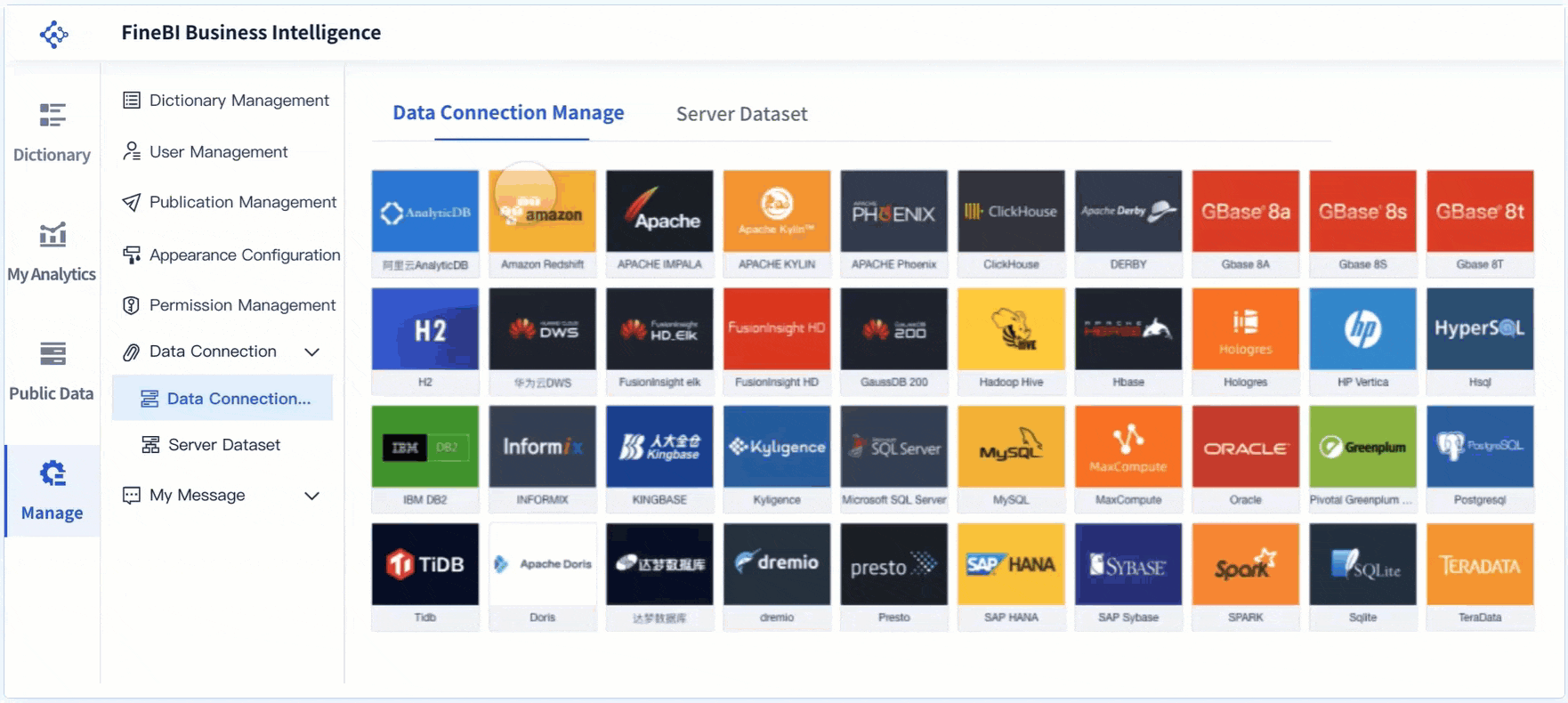
Integration with Existing Systems
Integrating ad hoc reporting tools with existing systems is crucial for seamless data access and analysis. Businesses should ensure that their reporting tools can connect to multiple data sources and integrate with other software applications. This integration facilitates comprehensive data analysis and enables users to generate reports that provide a holistic view of business operations. By breaking down data silos and promoting data sharing, organizations can enhance collaboration and transparency within teams.
By implementing these solutions, businesses can overcome the challenges associated with ad hoc reporting and unlock its full potential. This approach not only improves operational efficiency but also enhances decision-making capabilities, providing a competitive edge in today's fast-paced business environment.
Industry Applications of Ad Hoc Reporting
Ad hoc reporting plays a crucial role across multiple industries, offering real-time, customized insights that enhance decision-making and streamline operations. Below, we explore its applications in two key sectors: retail and healthcare.
Retail Sector
In the fast-paced world of retail, ad hoc reporting empowers businesses to remain agile and data-driven. Retailers use it to track real-time market trends and customer behavior, enabling them to stay competitive and responsive to ever-changing consumer demands.
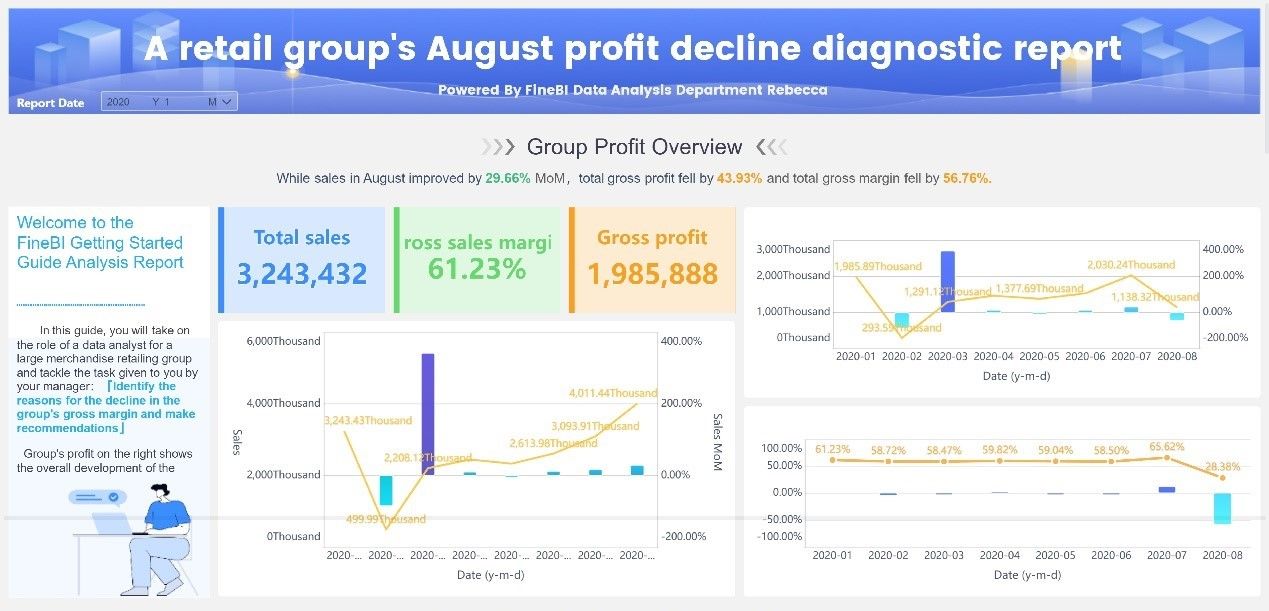
Inventory Management
Ad hoc reporting allows retailers to monitor sales patterns and product demand closely, leading to more efficient inventory management. By analyzing historical and real-time sales data, retailers can pinpoint which items are selling fast and adjust stock levels accordingly. This proactive approach reduces the risks of overstocking or stock shortages, ensuring the right products are available when and where they’re needed. As a result, businesses can minimize holding costs while maximizing customer satisfaction.
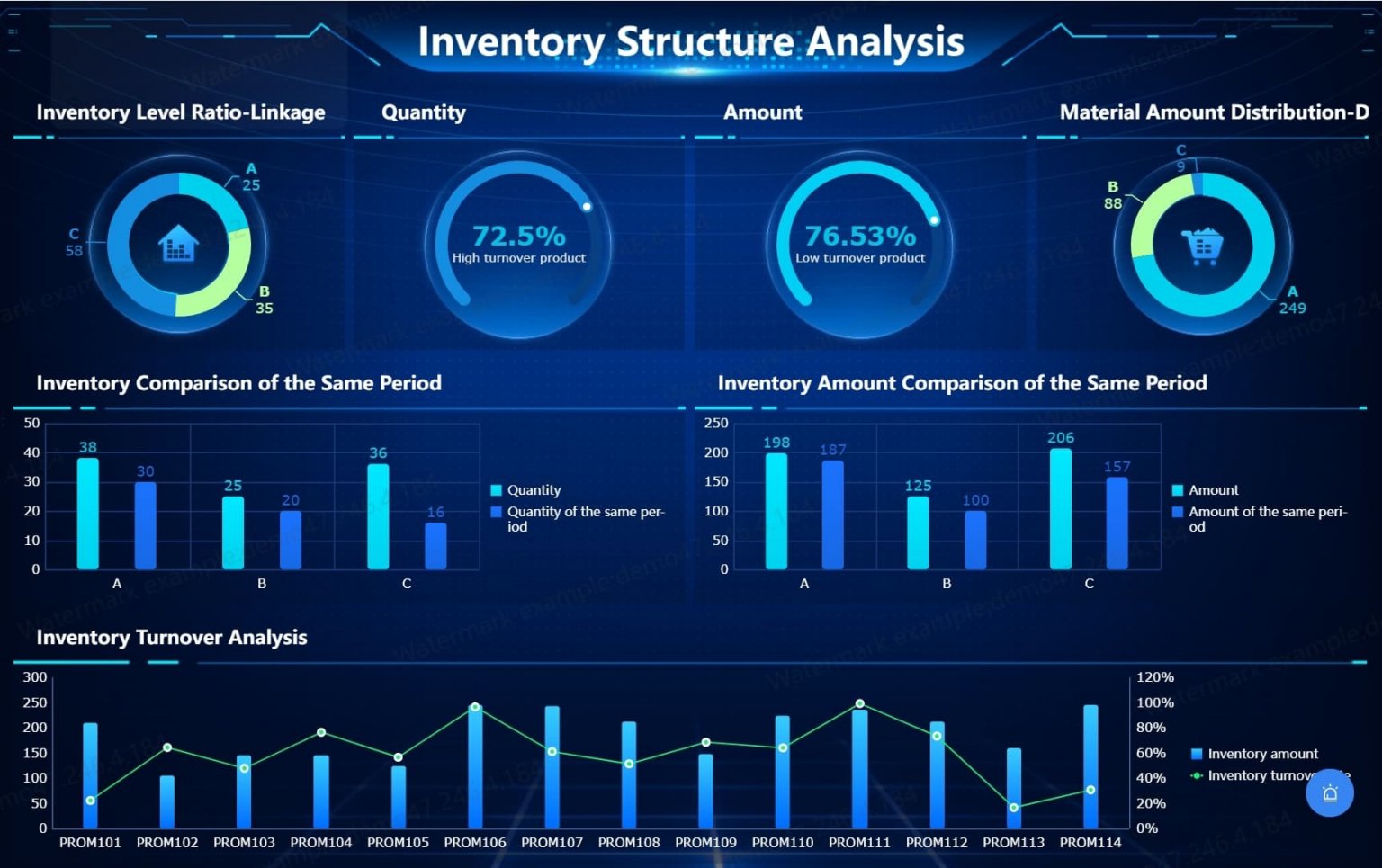
Customer Insights
Ad hoc reporting offers retailers detailed insights into customer preferences, purchasing behaviors, and product interactions. By examining this data, businesses can refine their marketing strategies and personalize offers to specific customer segments. This targeted approach not only drives higher sales but also improves customer experiences, fostering long-term loyalty. By leveraging ad hoc reporting, retailers can craft more effective loyalty programs, optimize product recommendations, and adapt to changing consumer preferences in real time.
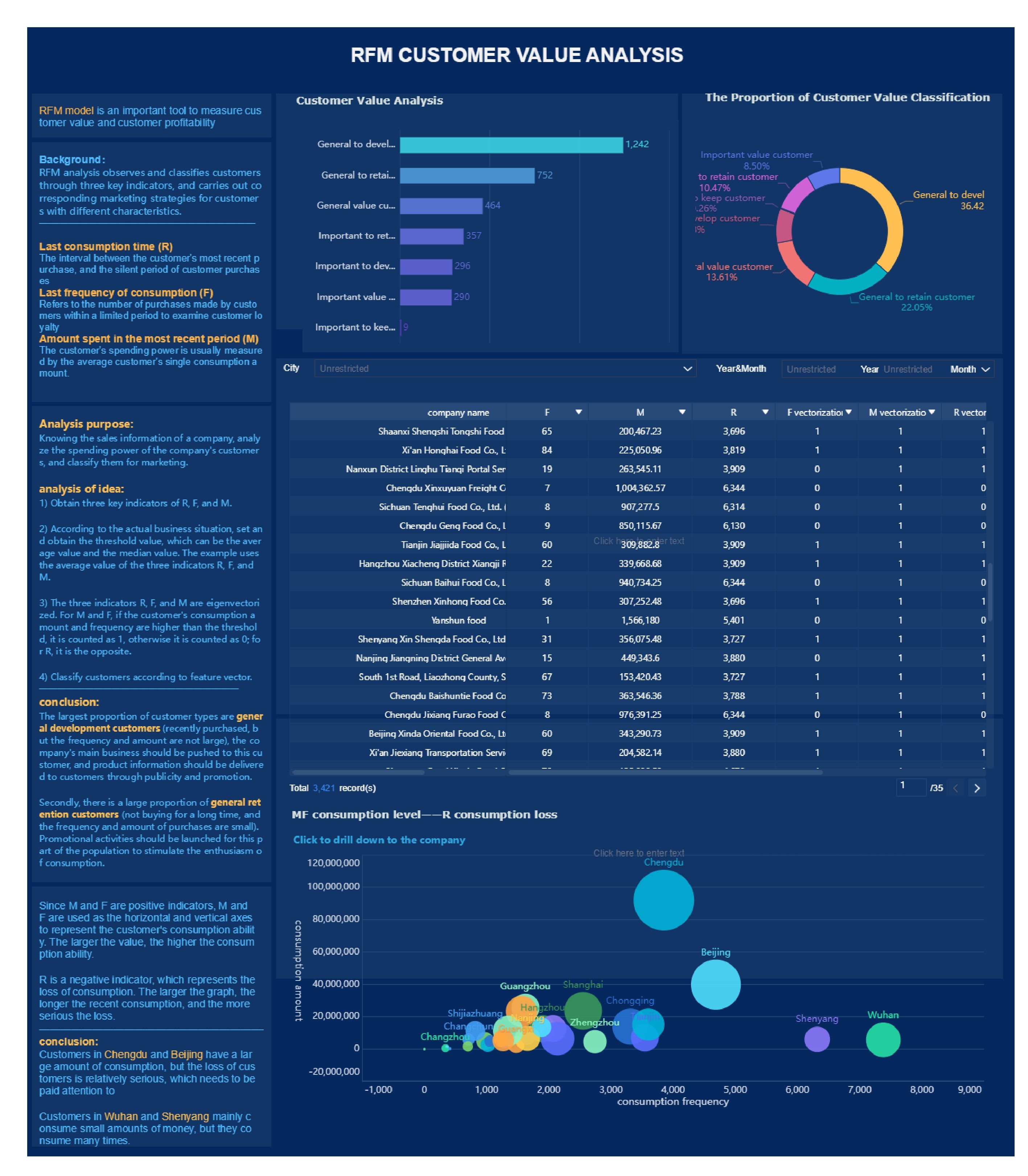
Healthcare Sector
In the healthcare industry, ad hoc reporting is a crucial tool for enhancing both patient care and operational efficiency. By providing real-time, customizable insights, it enables healthcare professionals to make data-driven decisions that improve treatment outcomes and streamline hospital operations.
Patient Data Analysis
Ad hoc reporting enables healthcare providers to analyze patient data in detail, offering valuable insights into clinical outcomes and treatment effectiveness. By tracking various metrics—such as recovery times, medication responses, and patient feedback—healthcare organizations can pinpoint areas for improvement in patient care. This detailed analysis helps in optimizing treatment plans, identifying successful interventions, and refining care delivery. Ultimately, it ensures better health outcomes by aligning care practices with patient needs and the latest medical evidence.
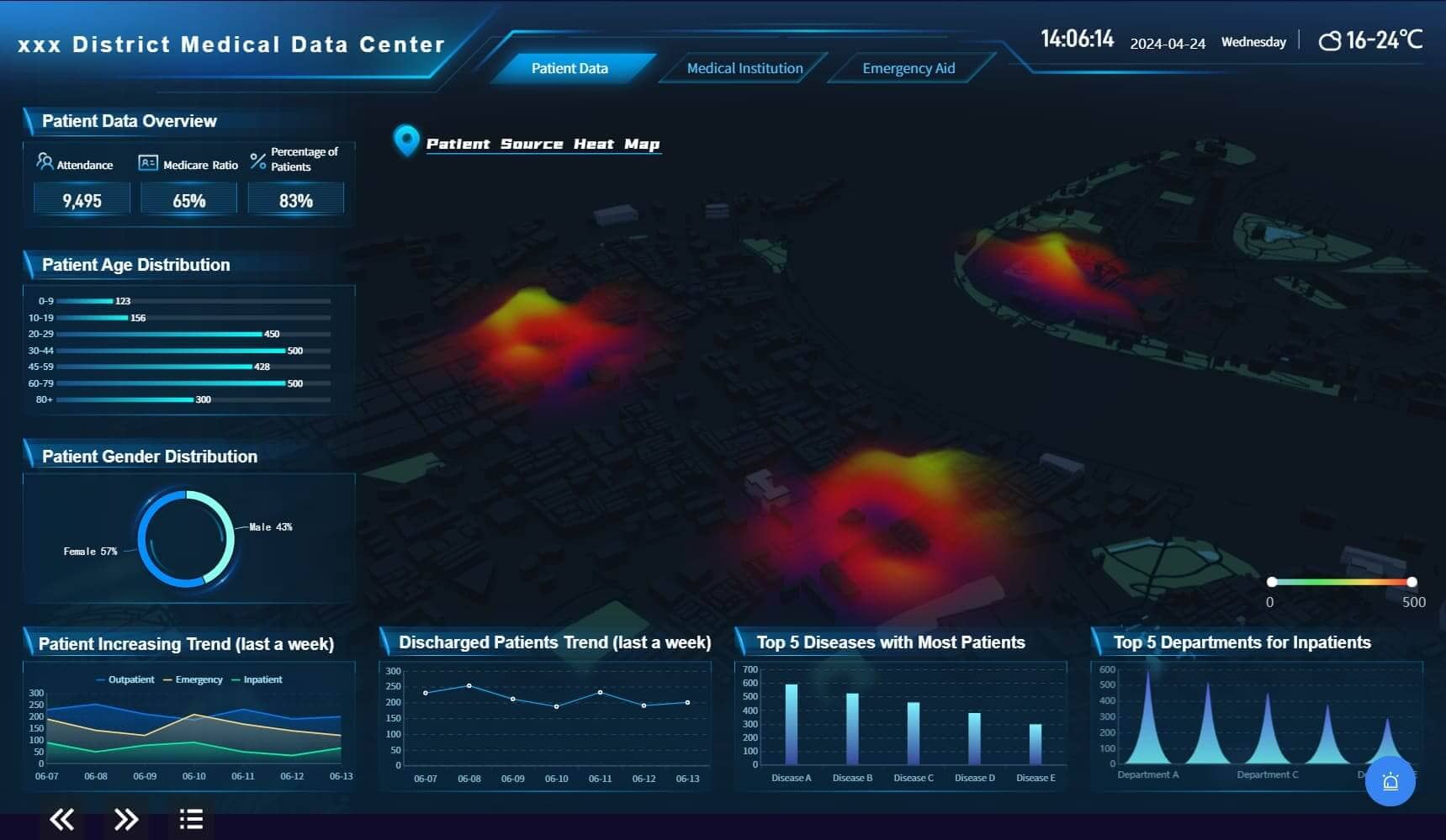
Operational Efficiency
Ad hoc reporting also plays a pivotal role in improving the operational efficiency of healthcare facilities. By analyzing workflow and operational data, hospitals can identify bottlenecks in processes such as patient admissions, staff scheduling, or equipment usage. This insight allows administrators to allocate resources more effectively, reducing wait times, optimizing bed occupancy, and ensuring that medical staff are deployed where they are most needed. The result is a more efficient healthcare system that not only improves patient experiences but also reduces costs and enhances the overall performance of the organization.
By leveraging the flexibility and immediacy of ad hoc reporting, healthcare providers can foster an environment of continuous improvement, both in patient care and administrative operations.
Future Trends in Ad Hoc Reporting
AI and Machine Learning Integration
The integration of Artificial Intelligence (AI) and Machine Learning (ML) is revolutionizing ad hoc reporting, taking data analysis to a new level by providing deeper insights, advanced predictions, and automation capabilities. These technologies enable businesses to uncover hidden trends and make more informed, data-driven decisions with greater efficiency.
Predictive Analytics
AI and ML significantly enhance predictive analytics within ad hoc reporting by analyzing large volumes of historical data to detect patterns and trends. These advanced algorithms can forecast future outcomes with greater accuracy, empowering businesses to make proactive decisions. For example, companies can predict market shifts, customer behavior changes, or operational risks, allowing them to stay ahead of the competition. By anticipating future trends, organizations can optimize resource allocation, mitigate potential issues, and capitalize on emerging opportunities.
Automated Insights
AI-driven tools offer automated insights that streamline the entire reporting process. Instead of manually sifting through data, AI and ML can quickly analyze datasets, generate actionable insights, and present them to users in a clear, concise format. This automation not only saves time but also reduces the potential for human error. By eliminating repetitive tasks, users can focus on higher-level strategic decision-making. Tools like FineReport and FineBI integrate AI and ML capabilities, providing users with seamless and automated reporting experiences. These platforms enable users to generate sophisticated reports with minimal effort, enhancing both productivity and data accuracy.
The combination of AI and ML in ad hoc reporting allows organizations to unlock the full potential of their data, leading to smarter decisions, optimized operations, and a stronger competitive advantage in an increasingly data-driven world.
Increased Personalization
Personalization in ad hoc reporting is revolutionizing the way users interact with data, offering tailored insights that cater to individual needs. This trend not only enhances user engagement but also boosts satisfaction by ensuring that the information provided is relevant and actionable.
Tailored Reporting Solutions
Ad hoc reporting allows users to fully customize their reports, ensuring that they align with specific business challenges, goals, or industry requirements. This flexibility empowers businesses to address unique problems more effectively by focusing on the data points that matter most. For instance, a retail business might tailor its reports to track inventory turnover, while a healthcare provider might prioritize patient outcomes. These bespoke reports provide organizations with deeper insights that directly align with their strategies, enabling more precise and impactful decision-making.
Enhanced User Experience
A personalized user experience makes data reporting tools more intuitive and accessible, significantly improving usability. Features like customizable dashboards, user-friendly interfaces, and drag-and-drop functionality allow individuals to design reports that suit their workflows. This ease of use encourages more frequent interaction with data, fostering a culture of data-driven decision-making within the organization. By empowering employees to engage with tailored reports that meet their specific needs, businesses can ensure that data becomes an integral part of daily operations and long-term planning.
Unlocking the Full Potential of Ad Hoc Reporting
By embracing trends such as AI-driven automation and increased personalization, businesses can maximize the potential of ad hoc reporting. Not only do these advancements streamline the reporting process, but they also enhance decision-making capabilities by delivering more relevant, timely, and actionable insights. In a rapidly evolving business environment, this level of personalization offers a critical competitive edge, enabling organizations to respond to challenges with greater agility and precision.
Integrating personalization with AI technology transforms ad hoc reporting into a dynamic tool that optimizes performance and drives innovation across industries.
FanRuan's Role in Ad Hoc Reporting
FanRuan plays a transformative role in advancing ad hoc reporting through its cutting-edge tools, FineBI and FineReport. These innovative products empower organizations to effectively harness the power of data, providing users with the ability to create customizable, real-time reports that drive informed decision-making and foster strategic growth.
FineBI and FineReport
FanRuan’s FineBI and FineReport are powerful tools that facilitate seamless data analysis and reporting, empowering businesses to harness data more effectively and make informed decisions with greater agility.
Facilitating Self-Service Analytics with FineBI
FineBI is designed to offer a robust self-service BI platform, enabling users to independently explore, analyze, and visualize data without needing constant IT support. By simplifying the process of connecting to diverse data sources, FineBI allows users to generate meaningful insights quickly. This democratization of data access promotes a culture of data-driven decision-making across the organization, encouraging faster, more accurate responses to business challenges. Its intuitive interface, combined with its ease of integration, transforms raw data into actionable intelligence, helping users monitor key performance indicators (KPIs) and trends effortlessly.

Streamlining Reporting and Data Management with FineReport
FineReport addresses critical business challenges like data silos and high operational costs through its flexible reporting solutions. One of its standout features is its ETL (Extract, Transform, Load) functionality, which consolidates fragmented data into a centralized warehouse. This process enhances data accessibility, consistency, and reliability, ensuring that users can build accurate reports tailored to specific needs. By streamlining the reporting process and promoting agility, FineReport helps organizations remain responsive to changing business conditions.
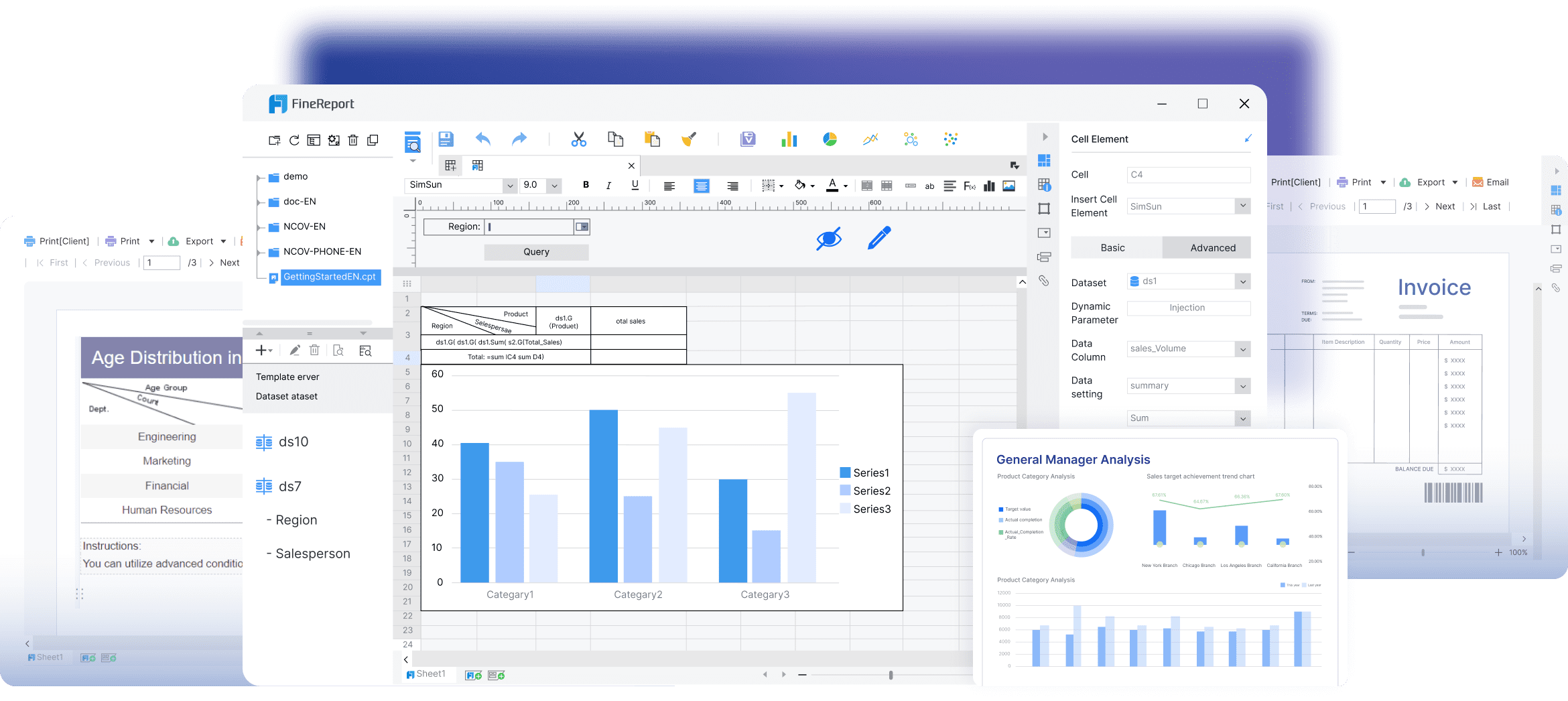
Enhancing Data Visualization Across Both Platforms
Both FineBI and FineReport excel in delivering advanced data visualization capabilities. FineBI converts complex datasets into insightful visual representations, enabling users to track KPIs, identify patterns, and gain a deeper understanding of business performance. Its interactive interface supports drill-down analysis, empowering users to dive into data and uncover hidden opportunities or risks.
FineReport complements this by offering a wide variety of chart styles and interactive features, allowing users to create dynamic, visually appealing reports and dashboards. These visualizations not only make complex data easier to comprehend but also facilitate better communication of insights across departments, improving collaboration and decision-making throughout the organization.
In sum, FineBI and FineReport provide a comprehensive solution for businesses looking to optimize their analytics and reporting processes, empowering teams with tools that drive efficiency, transparency, and innovation.
Ad hoc reporting stands as a vital tool for modern businesses, offering the flexibility to generate reports tailored to specific needs. This capability empowers organizations to react swiftly to trends and make informed decisions based on real-time data. By utilizing tools like FineReport and FineBI, businesses can enhance data exploration and visualization, leading to improved strategic outcomes. Embracing ad hoc reporting not only optimizes resource utilization but also provides a competitive edge in today's dynamic market. Companies are encouraged to adopt this approach to unlock the full potential of their data and drive business success.
Continue Reading About Reporting Tools
Top 15 AWS Reporting Tools for Effective Cost Management
Top 10 Ecommerce Reporting Tools for 2025
Top Client Reporting Tools for Agencies in 2025
FAQ

The Author
Lewis
Senior Data Analyst at FanRuan
Related Articles
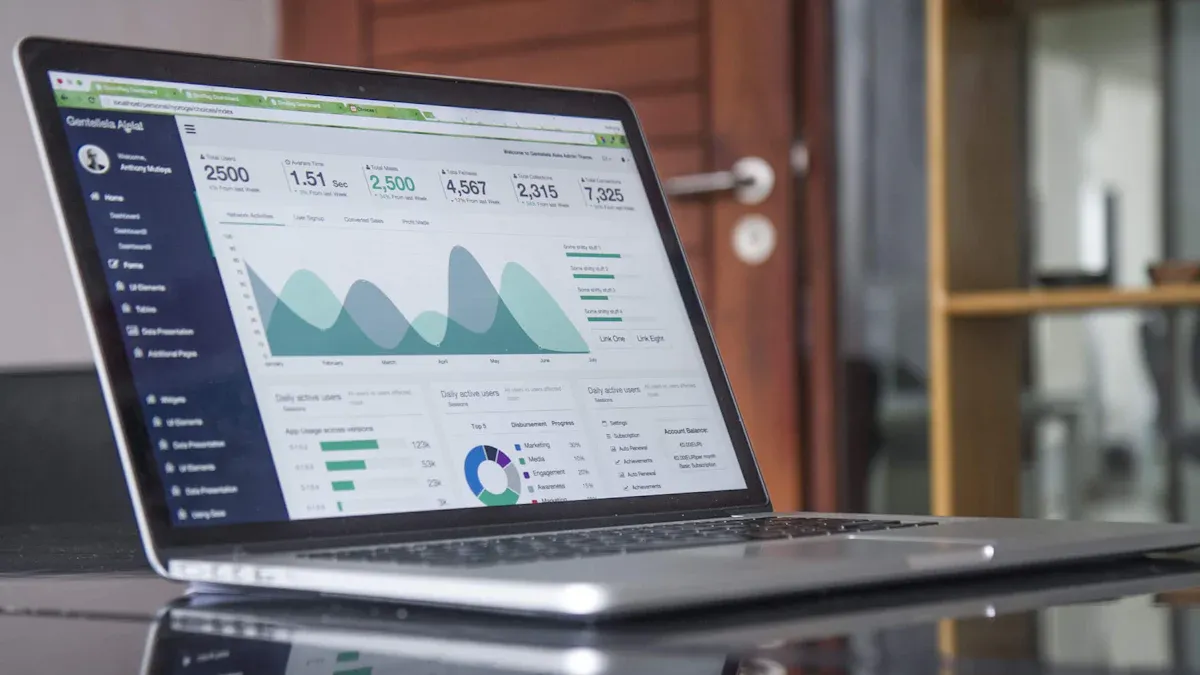
Understanding The Types of Tables in Data Management
Types of tables in data management include data, relational, decision, HTML, and pivot tables, each serving unique roles in organizing and analyzing data.
Lewis
Oct 13, 2025
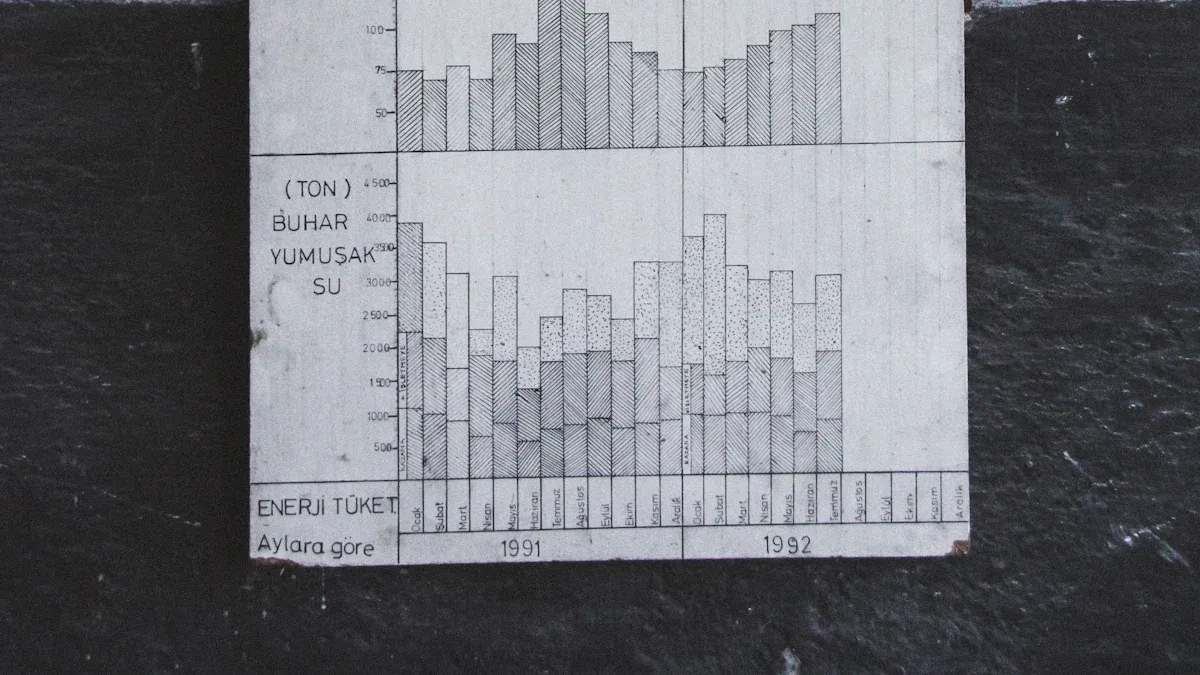
What Columns VS Rows Means in Data Tables
Columns vs rows in data tables: columns organize data by attribute vertically, while rows store individual records horizontally for clear analysis.
Lewis
Oct 12, 2025
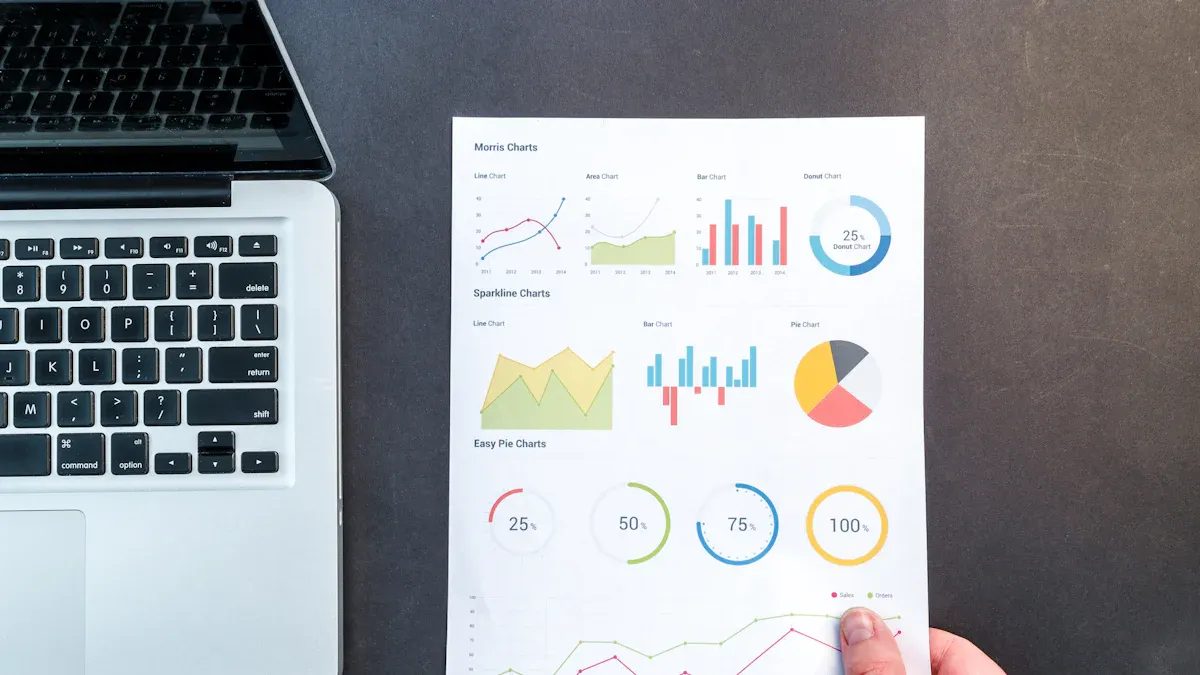
Oracle Reporting Tools and Their Key Functions
Oracle reporting tools offer real-time analytics, custom dashboards, and secure data integration for efficient business decision-making.
Lewis
Sep 25, 2025
